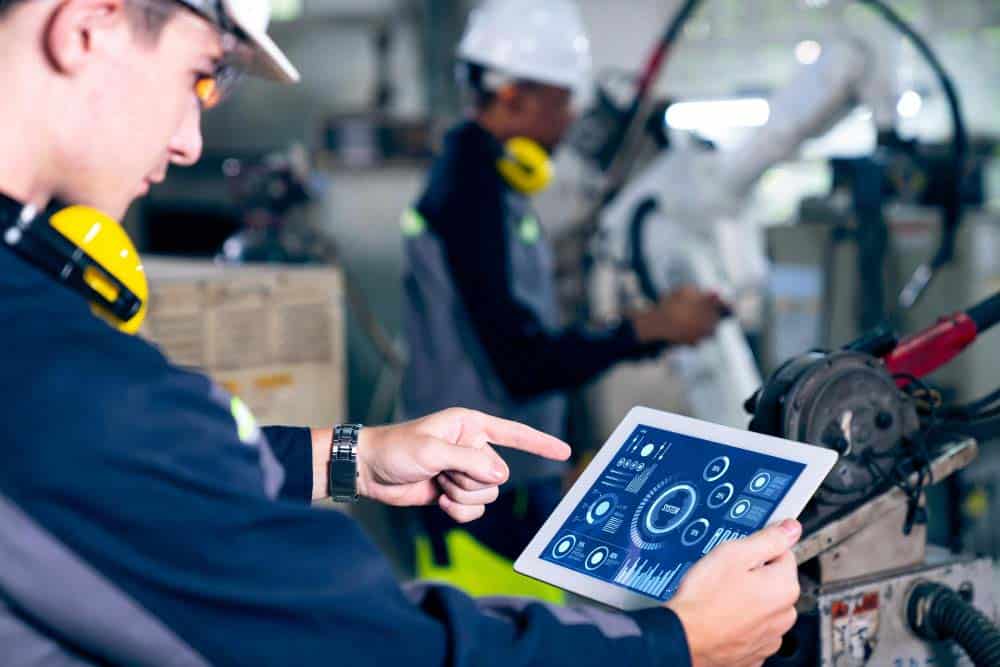When it comes to safety in industrial automation, PLCs (Programmable Logic Controllers) play a key role in providing overall system control. However, in order to ensure a safe working environment, es necesario incorporar funcionalidades de seguridad adicionales. Es aquí donde entran en juego las safety cards Safety.
El PLC consiste del mismo modo en un microprocesador especializado que ejecuta un programa específico para controlar las entradas y salidas del sistema. Estos programas permiten definir las condiciones y acciones que deben llevarse a cabo en base a las señales de entrada recibidas.
For their part, the Safety cardsalso known as part of the Safety PLCSafety cards, are components used in industrial automation and control systems to ensure the safety of people, equipment and processes. These cards are designed to comply with safety standards and regulations, and are used in conjunction with PLCs and other safety devices. Safety cards are used as supplementary components in PLC-based control systems to add specific security functionalities. These cards also allow supervision, monitoring and implementation of safety actions such as emergency stop sensors, safety switches, light curtains, among others.
These security cards implement algorithms and security logics that ensure the safe operation of the system. For example, they can perform functions such as safety loop supervision, signal integrity verification, response time monitoring, fault detection and execution of safety actions in case of dangerous situations.
Safety Card Features

When asked how does a Safety Card work in an industry? Within an industry, let's think of a chemical plant that produces and handles highly hazardous substances. In this plant, various equipment and systems are used to process chemicals, such as reactors, storage tanks, pumps and pipelines.
A safety card or Safety PLC is implemented in the process control system to ensure safety in all operations. The safety card is connected to a wide range of sensors and safety devices distributed throughout the plant. These sensors include gas detectors, temperature and pressure sensors, level gauges, as well as fire detection and extinguishing systems.
Therefore, this device constantly monitors signals from these sensors and devices, and triggers immediate safety responses in the event of any abnormal or dangerous conditions. It can also perform complex calculations and logic to ensure that proper safety protocols are followed.
A safety PLC has several outstanding features that make it a reliable choice for industrial safety applications. First of all, this type of PLC is certified by recognized entities such as Exida, TUV, among others, which guarantees its suitability for safety applications according to determined SIL levels.
This means that it complies with safety system design standards, such as IEC61508 (International Electrotechnical Commission safety standard), NFPA (National Fire Protection Association)such as IEC61508 (International Electrotechnical Commission safety standard), NFPA (National Fire Protection Association), FM (Factory Mutual), among others, which ensures greater system integrity and reliability.
In addition, the safety PLC incorporates comprehensive self-diagnostic routines for both for both hardware and software. This enables the detection of any dangerous internal faults and, should they occur, the PLC acts automatically to bring the machine or process to a safe condition. It therefore results in a reduced likelihood of undetected dangerous faults, which contributes to increased operational safety.
While the initial cost of acquiring a safety PLC may be higher compared to other conventional PLCs, in the long run its total lifetime cost is lower. This is because the incorporation of safety and self-diagnostic features reduces the risk of accidents and unplanned downtime. Thus, the safety PLC helps to minimize the costs associated with machine damage, repairs, lost production andrepairs, lost production and, most importantly, ensures worker safety.
Importance of Safety Cards
Safety cards play a key role in industrial automation. industrial automation by ensuring the safety of the processes and the people involved. Their incorporation in PLC-based control systems is essential to create a safe and reliable working environment. safe and reliable working environment.
First of all, Safety cards enable compliance with safety standards and regulations. safety standards and regulations set by the established by the competent authorities. These standards are becoming increasingly stringent, and companies must comply with them to ensure the protection of their workers and avoid legal sanctions. By using Safety Cards, companies demonstrate their commitment to safety and comply with legal and regulatory requirements.
Safety cards also provide an additional layer of protection in industrial control systems. protection in industrial control systems. Safety cards add safety-specific functionalities that enable the early detection of dangerous situations and the implementation of corrective actions quickly and efficiently. This helps prevent accidents, reduce downtime and minimize costs associated with safety incidents.
They also help companies adapt to new control technologies. With the advent of Industry 4.0 and the increasing incorporation of technologies such as the Internet of Things (IoT) and artificial intelligence (AI), there is a need for more flexible and secure control systems. more flexible and secure control systems. Safety Cards enable companies to implement advanced automation solutions without compromising safety, giving them a competitive advantage in an ever-changing business environment.
Without the presence of PLCs and Safety Cards, many companies would not be able to adapt to the incorporation of new control technologies. new control technologies. Today, PLCs continue to be a crucial part of the digital transformation demanded by Industry 4.0.
That is why hiring the best professionals for professionals for the supervision and installation of PLCs and Safety Cards is crucial to guarantee safety and is crucial to ensure safety and efficiency in industries and companies. These experts not only have the necessary knowledge and experience, but they are also aware of the latest technologies and regulations, which ensures quality work and a return on a smart investment that provides peace of mind and optimal results for companies.


